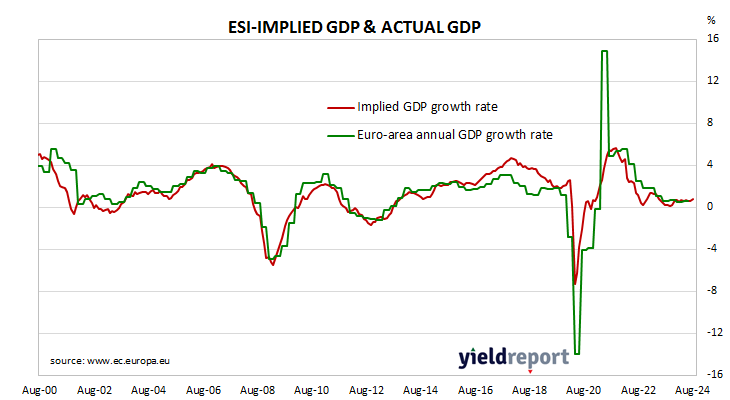Summary: Euro-zone composite sentiment indicator up modestly in August, slightly above expectations; Westpac: reflects nascent optimism over growth outlook; German, French 10-year yields barely move; readings up in three of five sectors; up in two of four largest euro-zone economies; index implies annual GDP growth rate of 0.8%.
The European Commission’s Economic Sentiment Indicator (ESI) is a composite index comprising five differently weighted sectoral confidence indicators. It is heavily weighted towards confidence surveys from the business sector, with the consumer confidence sub-index only accounting for 20% of the ESI. However, it has a good relationship with euro-zone GDP growth rates, although not necessarily as a leading indicator.
According to the latest survey taken by the European Commission, confidence has improved on average across the various sectors of the euro-zone economy in August. The ESI posted a reading of 96.6, slightly above expectations as well as July’s revised reading of 96.0. The average reading since 1985 is just under 100.
“These results speak to nascent optimism over the growth outlook,” said Westpac economist Jameson Coombs.
Long-term German and French 10-year bond yields barely moved on the day. By the close of business, the German 10-year yield had inched up 1bp to 2.28% while the French 10-year yield finished steady at 3.00%.
Confidence improved in three of the five sectors of the euro-zone economy. On a geographical basis, the ESI increased in two of four of the euro-zone’s largest economies.
End-of-quarter ESI readings and annual euro-zone GDP growth rates are highly correlated. This latest reading corresponds to a year-to-August GDP growth rate of 0.8%, up from July’s implied growth rate of 0.6%.



